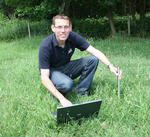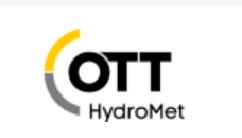 Add My Company
Add My Company
Sign In

The European Water Framework Directive and recent technological developments are radically changing the ways in which water resources are monitored. Robin Guy, OTT Hydrometrys Senior Technical Engineer explains.
Background
The European Water Framework Directive (WFD) aims to promote sustainable water use and to protect water resources. This relates to surface and ground water quantity, quality and ecological status and takes into consideration the likely impacts of climate change.
As a result, a holistic approach to the protection of water resources has developed - Integrated Catchment Management (ICM). This aims to protect water resources at source by avoiding diffuse and point source pollution, by minimising incidents of unconstrained flooding and drought, and by enhancing biodiversity.
A catchment is defined as the land area from which all water drains to a single watercourse. Consequently, the management of catchments necessitates a clear understanding of the complex relationships between land, air and water.
New approach to monitoring
In order to be able to meet the objectives of the WFD it has become necessary to adopt a different approach. The complete hydrological cycle for a catchment must be monitored, which means that it is now necessary to monitor precipitation, surface water, groundwater, soil moisture, vegetation levels and other factors such as land use. A need has also arisen to move away from spot measurements to continuous or semi-continuous monitoring.
In-situ monitoring
In the past, remote locations have been problematic because of a lack of power and the time and cost associated with site visits. However, technological advances in recent years have resulted in a far greater proportion of monitoring data being collected automatically in the field and transferred remotely; this has coincided with a greater requirement for field data as a result of the WFD.
Low power stand alone dataloggers are able to store many thousands of records without the need for mains power and where a continuous power supply is required this can often be provided by a solar or wind powered charger.
Communication technology has advanced beyond all recognition in recent years. As a result, a choice of highly effective and reliable wireless communications options exist, most of which are relatively low in cost and power requirement. These include GPRS, SMS, radio and satellite.
Sensor technology has also advanced to support the move to remote monitoring. Sensors are now more accurate, more reliable, less prone to drift and consequently require less frequent service and/or calibration. For example, in 1662 Sir Christopher Wren invented the first tipping bucket raingauge and this technology became the standard methodology throughout the 18th, 19th, and 20th centuries an astonishing achievement! However, in the early part of the 21st century a new technology emerged to replace Sir Christopher's which was able to remain accurate during intense rainfall, to require less maintenance and to provide precise data on rainfall intensity. The new device, known as 'OTT Pluvio2' employs a weighing measuring principle and is able to operate unattended in remote locations for long periods of time.
Many national rainfall monitoring authorities around the world are moving over to the newer technology. However, it is interesting to note that tipping bucket raingauges remain popular in many countries because of a requirement for direct comparability with historical data. Inevitably, under-reading of rainfall during high intensity precipitation will continue where this is the case.
Field water quality
Historically water quality measurements in remote locations have been undertaken with spot measurements using portable instruments and kits or by taking samples to a laboratory for in-depth analysis. However, here too, sensor technology has advanced considerably and it is now possible for multiparameter water quality monitors to log an array of
For more information on WFD dictates need for holistic monitoring strategy talk to OTT Hydrometry Ltd
Enquire Now
List your company on FindTheNeedle.
